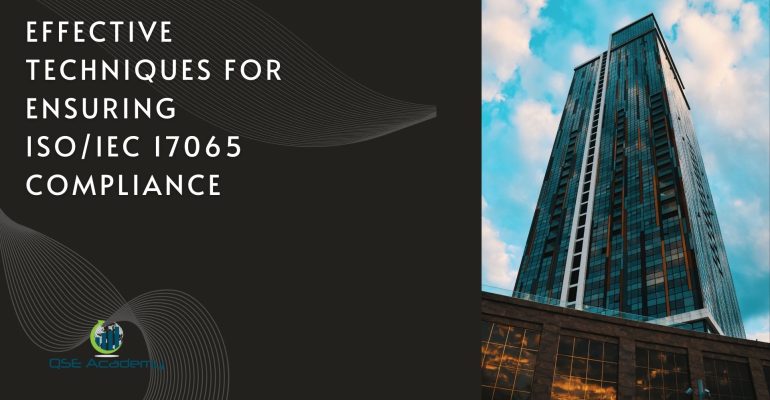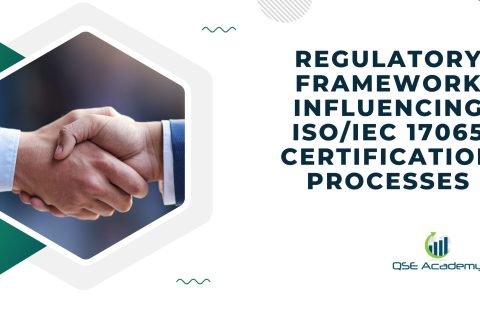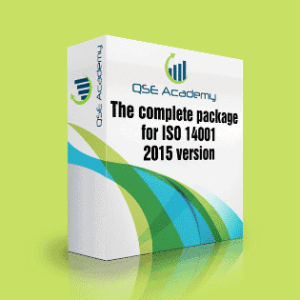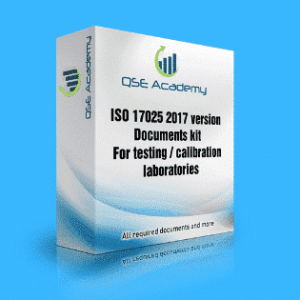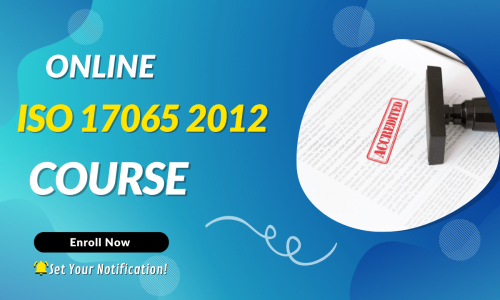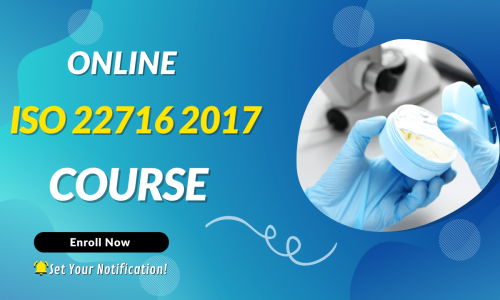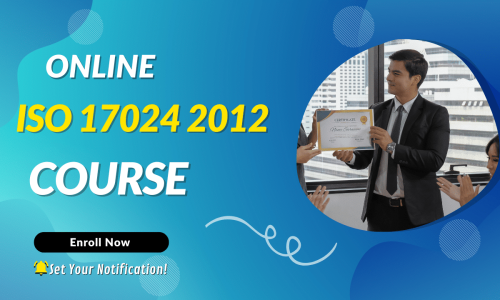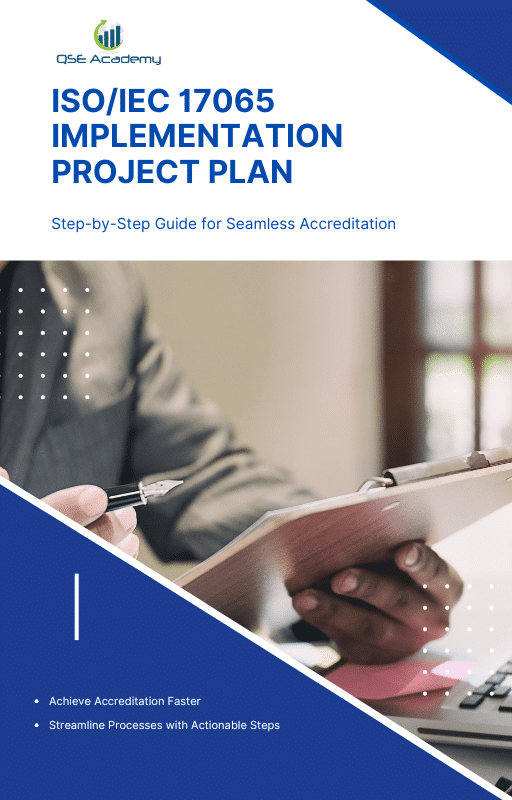Effective Techniques for Ensuring ISO/IEC 17065 Compliance
Effective Techniques for Ensuring ISO/IEC 17065 Compliance
If your organization is responsible for certifying products, services, or processes, you already know how crucial ISO/IEC 17065 compliance is. It’s not just about following a set of rules—it’s about ensuring fair, transparent, and consistent certification processes that build trust with clients, regulatory bodies, and the market.
But here’s the challenge: achieving and maintaining compliance can feel overwhelming, especially with all the documentation, audits, and impartiality requirements that come with it. That’s where the right techniques for ISO 17065 compliance can make all the difference.
Rather than scrambling before an audit or worrying about non-conformities, wouldn’t it be great to have a structured approach that keeps your certification body compliant year-round? That’s exactly what this guide will help you achieve.
In this article, we’ll break down practical, easy-to-implement techniques for ISO 17065 compliance, covering:
✔ How to structure and manage documentation effectively.
✔ Ways to strengthen internal audits to catch compliance issues early.
✔ Techniques for ensuring impartiality and fairness in certification decisions.
✔ The role of staff training in maintaining compliance.
✔ How to build a compliance-driven culture within your organization.
By the end, you’ll have a clear roadmap to follow, making compliance feel like a natural part of operations rather than a burden. Let’s dive in and explore how the right techniques for ISO 17065 compliance can help your organization stay ahead, reduce risks, and operate with confidence.
Understanding ISO/IEC 17065 Compliance
Before we dive into the techniques for ISO 17065 compliance, let’s take a step back and understand what this standard is all about and why it matters so much for certification bodies.
At its core, ISO/IEC 17065 is an international standard that ensures organizations certifying products, services, or processes do so in a way that is fair, consistent, and impartial. It exists to guarantee that certification bodies operate with credibility and integrity, giving confidence to businesses, regulators, and consumers who rely on their decisions.
But what does ISO 17065 compliance actually look like in practice? It means that your certification body:
✔ Follows a structured, transparent decision-making process – No room for personal bias or inconsistencies in granting or denying certifications.
✔ Maintains clear and accurate documentation – Every certification decision needs to be backed up by proper records.
✔ Has a strong impartiality policy – Ensuring that conflicts of interest don’t influence certification outcomes.
✔ Trains employees on compliance and competency – So that everyone understands their role in upholding ISO 17065 standards.
✔ Handles complaints and appeals fairly – Certification applicants must have a clear process to dispute decisions if needed.
Why Compliance Matters for Certification Bodies
For organizations that certify organic foods, medical devices, safety equipment, environmental standards, or any other regulated product or service, compliance isn’t optional—it’s essential for credibility. If a certification body fails to comply, it risks:
❌ Losing accreditation, which can damage reputation and limit business opportunities.
❌ Legal and financial consequences, including penalties or lawsuits.
❌ Eroding customer trust, making businesses and regulators hesitant to rely on your certifications.
On the flip side, when a certification body effectively follows techniques for ISO 17065 compliance, it benefits from:
✔ Stronger market trust, as clients and regulators see the certification process as reliable and credible.
✔ Smoother audits, because documentation and processes are always audit-ready.
✔ Operational efficiency, reducing errors, redundancies, and compliance risks.
How to Make ISO 17065 Compliance Easier
The good news? Compliance doesn’t have to feel like an impossible task. With the right techniques for ISO 17065 compliance, certification bodies can simplify processes, maintain credibility, and reduce stress when audits come around.
In the next section, we’ll explore the best techniques to ensure ongoing compliance, from documentation management to internal audits, impartiality policies, and employee training.
Let’s dive in!
Key Techniques for ISO 17065 Compliance
Now that we understand why ISO 17065 compliance is so important, let’s talk about the best techniques to ensure your certification body stays on track. Achieving and maintaining compliance doesn’t have to be overwhelming. With the right approach, you can simplify processes, avoid unnecessary stress, and ensure your organization meets ISO 17065 standards year-round.
The following techniques for ISO 17065 compliance will help you stay organized, improve efficiency, and strengthen credibility in your certification activities.
Developing a Strong Documentation System
Let’s be honest—nobody loves paperwork, but when it comes to ISO 17065 compliance, proper documentation is non-negotiable. A well-structured documentation system is the foundation of compliance, ensuring that your certification decisions are traceable, consistent, and transparent.
Here’s how to make documentation work for you:
✔ Maintain a centralized document repository – Whether digital or physical, your documentation should be easily accessible and well-organized.
✔ Keep records of certification decisions – Auditors will expect to see why certifications were approved or denied, so make sure each decision is backed by clear documentation.
✔ Regularly review and update documents – Outdated policies or inconsistent records can create compliance issues. Schedule periodic document reviews to keep everything current.
✔ Use standardized templates – This ensures that reports, policies, and certification documents remain consistent across the organization.
🔹 Pro Tip: If an auditor asked you to retrieve a document right now, could you find it within a few minutes? If not, it’s time to rethink your documentation system!
Implementing a Robust Internal Audit Program
A great way to avoid surprises during an external audit is to audit yourself first. Internal audits help you identify compliance gaps, assess risks, and strengthen weak areas before they become major issues.
Here’s how to make internal audits effective:
✔ Schedule audits regularly – Don’t wait until an external audit is approaching—conduct internal audits at least once a year to stay proactive.
✔ Use an ISO 17065 compliance checklist – Create a detailed checklist to ensure you’re reviewing all critical compliance areas, from impartiality policies to record-keeping.
✔ Document findings and corrective actions – If your internal audit reveals non-conformities, address them immediately and keep a record of the corrective actions taken.
✔ Assign an internal audit team – Having multiple perspectives can help identify issues that might be overlooked otherwise.
🔹 Pro Tip: Treat internal audits as a learning opportunity rather than a formality. The goal is to improve processes, not just check a box.
Ensuring Impartiality in Certification Decisions
One of the core principles of ISO 17065 compliance is ensuring fairness and impartiality in certification decisions. If there’s even a hint of bias or conflict of interest, it can seriously damage the credibility of your certification body.
Here’s how to ensure impartiality:
✔ Establish clear impartiality policies – Document how your organization prevents conflicts of interest and ensures fair decision-making.
✔ Separate roles in the certification process – The same person shouldn’t be responsible for evaluating and approving a certification—it’s a conflict of interest.
✔ Implement an impartiality review committee – A designated team should review high-stakes decisions to ensure fair and unbiased outcomes.
✔ Conduct regular risk assessments – Review potential threats to impartiality and develop mitigation strategies before issues arise.
🔹 Pro Tip: If an auditor asked, “How does your organization ensure impartiality in certification decisions?”—could you provide clear evidence? If not, it’s time to strengthen your impartiality measures.
Training and Competency Development for Staff
Even the best compliance policies won’t work if your team doesn’t understand them. Proper training ensures that everyone involved in the certification process is knowledgeable and aligned with ISO 17065 requirements.
Here’s how to build a strong training program:
✔ Provide ISO 17065 compliance training – Employees should understand the standard, including documentation requirements, impartiality rules, and complaint-handling procedures.
✔ Conduct regular refresher courses – Regulations and best practices evolve, so training shouldn’t be a one-time event.
✔ Test competency through assessments – Simple quizzes or case study reviews can help ensure employees fully grasp compliance concepts.
✔ Encourage open discussions on compliance – Foster a culture where employees feel comfortable asking questions and discussing compliance challenges.
🔹 Pro Tip: Well-trained employees aren’t just better prepared for audits—they also help prevent compliance mistakes before they happen.
Implementing an Effective Complaints and Appeals Process
A strong complaints and appeals process isn’t just about meeting compliance requirements—it’s about building trust with clients and stakeholders. If an applicant feels they’ve been treated unfairly, they should have a clear, structured way to challenge certification decisions.
Here’s how to create a fair and effective process:
✔ Have a clearly defined complaints procedure – Every applicant should know how to file a complaint or appeal.
✔ Ensure independence in complaint handling – The person reviewing a complaint shouldn’t be the one who made the original certification decision.
✔ Keep detailed records of all complaints – Document how each complaint was handled and what corrective actions were taken.
✔ Use complaint trends to improve processes – If the same issues keep coming up, they may indicate deeper process weaknesses that need attention.
🔹 Pro Tip: A well-managed complaints system doesn’t just help with compliance—it boosts your organization’s reputation by showing a commitment to fairness and transparency.
Why These Techniques for ISO 17065 Compliance Matter
By applying these techniques for ISO 17065 compliance, your certification body can:
✔ Ensure transparency and fairness in certification decisions.
✔ Streamline internal processes, making compliance easier.
✔ Reduce risks of non-conformities during audits.
✔ Build trust with clients, regulators, and industry stakeholders.
Compliance doesn’t have to be complicated—with the right strategies, it becomes second nature.
Up next, we’ll discuss how to maintain compliance long-term, ensuring that your organization stays ahead of regulatory changes and evolving industry best practices.
Let’s keep going!
Ongoing Strategies for Maintaining ISO 17065 Compliance
Achieving ISO 17065 compliance is a big accomplishment—but the real challenge is maintaining it over time. Compliance isn’t a one-time task that you check off and forget about. Instead, it requires continuous effort, regular updates, and a proactive approach.
So, how do you make sure your certification body stays compliant year after year? The answer lies in smart, sustainable strategies that keep your processes aligned with ISO 17065 requirements without adding unnecessary stress.
Let’s explore some of the best techniques for ISO 17065 compliance that will help you stay ahead, avoid compliance risks, and make future audits a breeze.
Staying Updated on Regulatory Changes
One of the biggest compliance risks is falling behind on ISO 17065 updates. Standards evolve over time, and if your organization isn’t actively tracking changes, you could end up non-compliant without realizing it.
Here’s how to stay ahead:
✔ Monitor ISO updates and industry regulations – Subscribe to ISO’s official website, industry newsletters, and accreditation body updates.
✔ Engage with compliance networks and associations – Being part of professional groups helps you stay informed about upcoming changes.
✔ Attend ISO-related training and workshops – Regular participation in seminars and courses ensures your team understands new requirements as they emerge.
✔ Schedule periodic policy reviews – Set a reminder to review all compliance-related documents at least once a year to ensure they align with the latest standards.
🔹 Pro Tip: Assign a compliance officer or team to track regulatory changes and ensure they’re implemented smoothly into your existing systems.
Building a Culture of Compliance
When compliance is treated as just another administrative task, it often gets neglected until an audit is near. The best way to ensure long-term ISO 17065 compliance is to make it part of your company culture—something that everyone understands and values.
Here’s how to build a compliance-driven culture:
✔ Make compliance part of employee onboarding – Every new team member should receive ISO 17065 training so they understand their role in maintaining compliance.
✔ Encourage open discussions – Hold regular meetings where employees can ask questions, report concerns, or suggest improvements.
✔ Recognize and reward compliance efforts – Publicly acknowledging employees who contribute to compliance success keeps morale high and reinforces good practices.
✔ Lead by example – If leadership prioritizes compliance, employees will too. Make sure managers and supervisors actively support compliance initiatives.
🔹 Pro Tip: Create an anonymous reporting system where employees can report potential compliance issues without fear of backlash.
Regular Internal Reviews and Continuous Improvement
A common mistake organizations make is waiting for an external audit to check compliance. Instead, the best approach is continuous self-improvement through regular internal reviews.
✔ Schedule periodic compliance reviews – Don’t wait for the next audit—conduct mini-reviews every quarter to catch issues early.
✔ Encourage process optimization – Look for ways to simplify and improve compliance procedures so they are more efficient and user-friendly.
✔ Document lessons learned from past audits – Keep a record of previous audit findings and track how improvements have been implemented.
✔ Use technology to streamline compliance – Consider document management systems and audit tracking software to automate repetitive tasks and reduce manual errors.
🔹 Pro Tip: Treat each audit as an opportunity for growth—identify what went well and where you can get even better next time.
Ensuring Consistency in Certification Decisions
One of the most critical techniques for ISO 17065 compliance is ensuring that your certification decisions are consistent, transparent, and impartial. If your certification body makes inconsistent or biased decisions, you risk losing credibility and accreditation.
✔ Maintain clear, repeatable certification procedures – Every decision should follow a standardized process to avoid discrepancies.
✔ Use certification review committees – A multi-person review system reduces bias and strengthens impartiality.
✔ Ensure all decision-makers receive proper training – Certifiers should fully understand ISO 17065 requirements and how to document their decisions correctly.
✔ Keep a log of past certification decisions – If an audit or dispute arises, you should be able to show how past decisions were made and justify them with evidence.
🔹 Pro Tip: Randomly review past certification decisions internally to ensure that procedures are followed correctly every time.
Why These Techniques for ISO 17065 Compliance Matter
By using these ongoing strategies, your certification body can:
✔ Stay ahead of regulatory changes, reducing the risk of unexpected non-conformities.
✔ Maintain a culture where compliance is second nature rather than a last-minute concern.
✔ Improve internal efficiency, making audits easier and operations smoother.
✔ Ensure fair and transparent certification decisions, strengthening trust with stakeholders.
ISO 17065 compliance isn’t just about meeting a standard—it’s about building a system that ensures credibility, fairness, and long-term success.
Up next, we’ll explore the most common compliance mistakes certification bodies make—and how to avoid them before they become major issues.
Let’s keep going!
Common Mistakes to Avoid in ISO 17065 Compliance
Even with the best techniques for ISO 17065 compliance, mistakes can still happen. Some certification bodies unintentionally create compliance gaps that can lead to audit findings, operational inefficiencies, and even loss of accreditation. The good news? Most of these mistakes are avoidable once you know what to look out for.
Let’s go over some of the most common compliance mistakes and how to steer clear of them so your organization stays strong, credible, and fully compliant.
1. Overcomplicating Documentation
One of the biggest ISO 17065 compliance pitfalls is creating overly complex documentation. While it’s essential to keep thorough records, excessive detail, redundant information, or confusing structures can make compliance harder instead of easier.
How to Avoid This Mistake:
✔ Keep documents clear, concise, and well-structured – Avoid lengthy, wordy policies that are difficult to follow.
✔ Use bullet points and summaries – Make key points easy to find at a glance.
✔ Organize documents logically – A well-structured filing system ensures employees can quickly access the right records when needed.
🔹 Pro Tip: If your employees struggle to find or understand compliance documents, it’s time to simplify them!
2. Failing to Conduct Regular Internal Audits
Some certification bodies treat internal audits as an afterthought, only reviewing compliance when an external audit is coming up. This reactive approach can lead to missed issues that turn into major problems during official audits.
How to Avoid This Mistake:
✔ Schedule internal audits at least once a year – Regular audits keep compliance on track and allow you to catch issues early.
✔ Use a structured ISO 17065 compliance checklist – This ensures that nothing is overlooked during internal reviews.
✔ Document and act on audit findings – Identifying issues is only half the battle—correct them promptly to improve compliance.
🔹 Pro Tip: Think of internal audits as practice runs—the more you do them, the easier external audits will be!
3. Ignoring Non-Conformities from Past Audits
If your organization has received non-conformities in past audits, it’s critical to address them properly. Some certification bodies fix immediate issues but don’t implement long-term solutions, leading to repeat findings in future audits.
How to Avoid This Mistake:
✔ Create a corrective action plan – Outline what went wrong, how it was fixed, and how you’ll prevent it from happening again.
✔ Assign accountability – Make sure someone is responsible for tracking and implementing corrective actions.
✔ Follow up on changes – Regularly review past non-conformities to ensure improvements are working as intended.
🔹 Pro Tip: Auditors appreciate organizations that learn from past mistakes and show a commitment to continuous improvement.
4. Lack of Employee Awareness and Training
Even if your documentation is perfect, compliance issues can still arise if employees don’t understand the requirements. A poorly trained team can lead to inconsistent certification decisions, improper record-keeping, and audit findings.
How to Avoid This Mistake:
✔ Provide ongoing ISO 17065 training – Employees should understand their roles, compliance requirements, and certification processes.
✔ Make training interactive and engaging – Use real-world examples, case studies, and scenario-based discussions to reinforce learning.
✔ Test competency regularly – Simple quizzes or role-based assessments ensure employees fully grasp compliance expectations.
🔹 Pro Tip: A well-trained team reduces compliance risks and ensures smooth certification operations.
5. Inconsistent Certification Decisions
ISO 17065 requires that all certification decisions be fair, consistent, and transparent. However, some certification bodies unintentionally create inconsistencies by applying different standards to similar cases.
How to Avoid This Mistake:
✔ Standardize certification procedures – Ensure all decisions follow a repeatable, documented process.
✔ Use a decision review committee – Having multiple reviewers helps prevent bias and ensures fairness.
✔ Keep a record of all past certification decisions – This allows you to compare cases and ensure consistency.
🔹 Pro Tip: If two similar certification applications would receive different decisions, something needs to be adjusted!
6. Weak Complaints and Appeals Process
A poorly managed complaints and appeals process can undermine trust in your certification body. If applicants don’t have a clear way to challenge decisions, they may escalate the issue to regulators or accreditation bodies, causing unnecessary complications.
How to Avoid This Mistake:
✔ Have a well-documented complaints process – Ensure applicants know how and where to submit complaints or appeals.
✔ Ensure impartiality in handling complaints – The person reviewing the appeal should not be the same person who made the original decision.
✔ Track and analyze complaint trends – If similar issues keep coming up, look for process improvements to prevent them.
🔹 Pro Tip: A strong complaints system not only ensures compliance—it also demonstrates transparency and accountability.
Why Avoiding These Mistakes Matters
By avoiding these common ISO 17065 compliance mistakes, your certification body can:
✔ Reduce compliance risks and avoid audit findings.
✔ Improve efficiency and streamline certification processes.
✔ Build stronger trust with clients, regulators, and stakeholders.
✔ Ensure long-term accreditation and credibility.
Compliance isn’t about perfection—it’s about consistency, transparency, and continuous improvement. The more proactive you are in avoiding common pitfalls, the easier it will be to maintain ISO 17065 compliance year after year.
Up next, we’ll wrap up with a final recap of the best techniques for ISO 17065 compliance and how to apply them for long-term success.
Let’s bring it all together!
Conclusion: Mastering Techniques for ISO 17065 Compliance
We’ve covered a lot of ground when it comes to techniques for ISO 17065 compliance, and by now, you should have a clear roadmap for ensuring your certification body operates fairly, transparently, and consistently.
ISO 17065 compliance isn’t just about meeting a checklist of requirements—it’s about creating a strong, credible system that ensures trust in your certification decisions. Whether you’re documenting processes, training your team, or conducting internal audits, each step plays a role in strengthening your organization’s compliance strategy.
Key Takeaways on Techniques for ISO 17065 Compliance
✔ Keep documentation simple, clear, and accessible – Well-organized records make compliance and audits much easier.
✔ Conduct regular internal audits – Catching and fixing issues before an external audit keeps compliance stress-free.
✔ Train employees regularly – A well-informed team reduces compliance risks and improves efficiency.
✔ Ensure impartiality in certification decisions – Transparent, unbiased processes build trust and credibility.
✔ Maintain a strong complaints and appeals process – A clear and fair system prevents disputes from escalating.
✔ Stay proactive, not reactive – Compliance isn’t a one-time event—it’s an ongoing commitment to excellence and continuous improvement.
Final Thoughts: Compliance as a Competitive Advantage
Rather than seeing compliance as a burden, think of it as an opportunity to build credibility and trust in your certification body. Organizations that consistently apply the right techniques for ISO 17065 compliance don’t just pass audits—they create a strong foundation for long-term success.
By staying proactive, continuously improving, and embedding compliance into your daily operations, you’ll ensure your organization remains efficient, reliable, and fully aligned with ISO 17065 requirements.
So, are you ready to take your ISO 17065 compliance to the next level? Start applying these techniques today, and watch how compliance becomes a natural and valuable part of your organization’s success!
I hold a Master’s degree in Quality Management, and I’ve built my career specializing in the ISO/IEC 17000 series standards, including ISO/IEC 17025, ISO 15189, ISO/IEC 17020, and ISO/IEC 17065. My background includes hands-on experience in accreditation preparation, documentation development, and internal auditing for laboratories and certification bodies. I’ve worked closely with teams in testing, calibration, inspection, and medical laboratories, helping them achieve and maintain compliance with international accreditation requirements. I’ve also received professional training in internal audits for ISO/IEC 17025 and ISO 15189, with practical involvement in managing nonconformities, improving quality systems, and aligning operations with standard requirements. At QSE Academy, I contribute technical content that turns complex accreditation standards into practical, step-by-step guidance for labs and assessors around the world. I’m passionate about supporting quality-driven organizations and making the path to accreditation clear, structured, and achievable.

